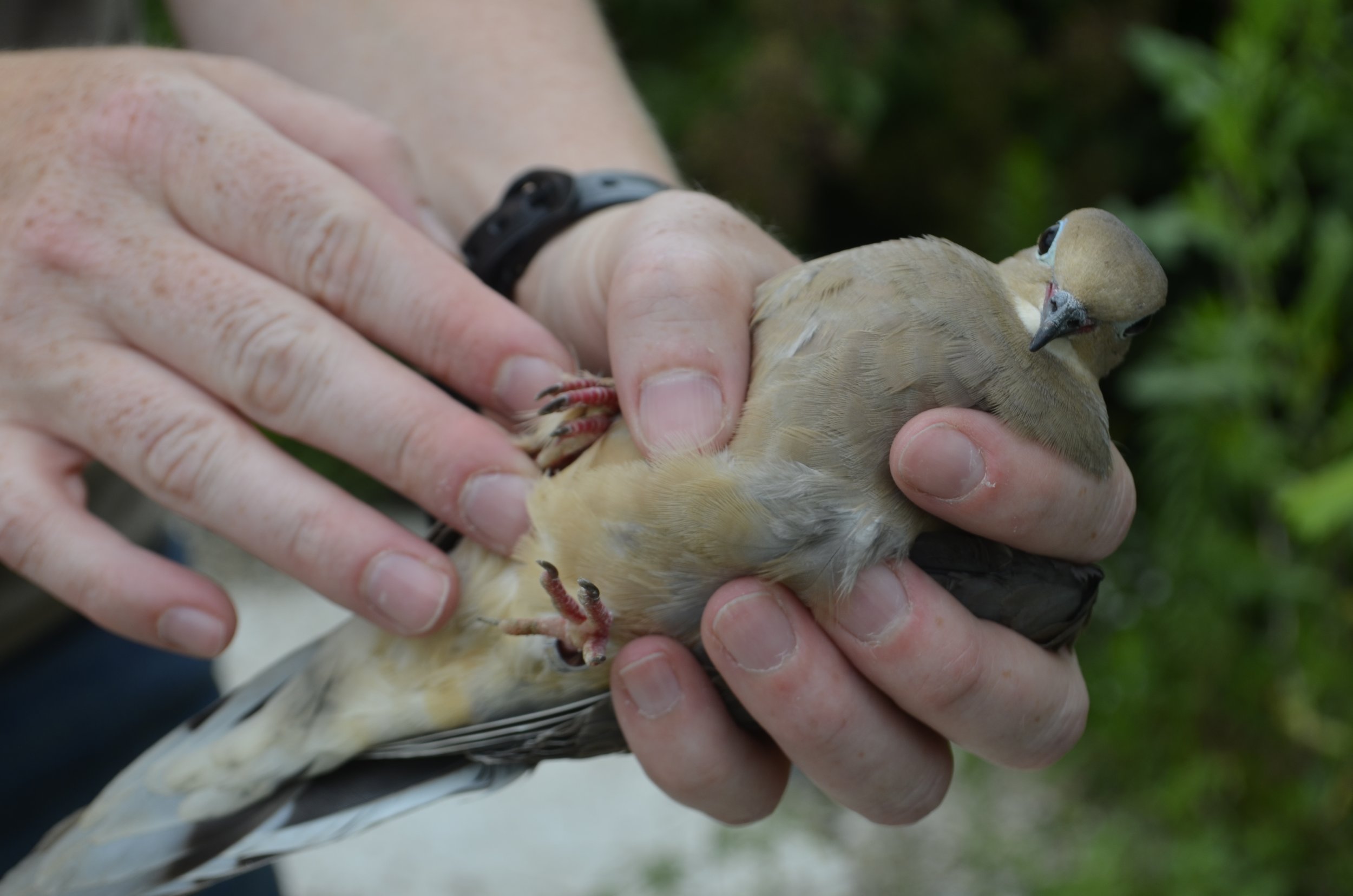In the bird world, you may think the keys to success are large, sharp talons or an intimidating wingspan, but Mourning Doves prove that sometimes, all you need for success is sheer adaptability. Although Mourning Doves are the most hunted migratory game birds in North America, with hunters shooting approximately 20 million doves per year, they continue to be one of the most common birds in North America with an estimated continental population of 350 million. So, what makes these gentle birds so resilient?
Mourning Dove distribution map via the Cornell Lab of Ornithology.
No matter where you are in North America, rest assured that a Mourning Dove is close by, as the only habitat they truly avoid is dense, unbroken forests. Unlike some species of birds who have specific habitat requirements for nesting, Mourning Doves quickly assemble loose sticks, pine needles, and grass into flimsy nests in shrubs, trees, eaves, gutters, abandoned equipment, or even on the ground. With less time spent on nest building, Mourning Doves are able to breed early and often, producing one to six broods of two eggs from April through September (and in warmer climates, all year round!). Mourning Doves primarily feed on the ground and eat a variety of seed including cultivated grains, wild grasses, weeds, herbs, and occasionally berries.
With such strong hunting pressure, it is vital that their population is monitored to ensure they are not overharvested. In Wisconsin, the DNR is participating in a national plan to monitor Mourning Dove populations for harvest management. Each year, biologists around the state aim to trap and band 850 Mourning Doves. While banding the birds, they also record the age (hatch-year or after hatch-year) and sex of the individual. To determine whether a dove is a hatch-year or after hatch-year bird, you must look at the tips of the birds’ primary covert feathers: in hatch-year birds, the tips of their primary coverts are lighter than the rest of the feather, while after hatch-year birds lack the buffy, light tips. It can be tricky to distinguish between male and female Mourning Doves, but generally, males have more vivid coloration and sometimes flaunt a rosy pink chest and a dusty blue patch at the tops of their heads. However, there can be variation among individuals, so it is best to record the sex as “unknown” if there is uncertainty.
Goose Pond Sanctuary provides excellent habitat for Mourning Doves with its wide open restored prairies, shrubby fence lines, and surrounding agricultural fields. They benefit from our food plots, which have included corn, sunflowers, and sorghum. The current eBird high count at Goose Pond is 180, only 20 shy from the Columbia county high count made at nearby Schoeneberg Marsh. For that reason, DNR Wildlife Biologist Sara Kehrli has used the area as one of the Mourning Dove banding locations in Columbia county for the last 16 years. From 2006 to 2019, Sara has banded 646 Mourning Doves at the sanctuary. In the first 11 years, 11 of the doves were reported by hunters: eight from Wisconsin and three from Georgia, Louisiana, and Mississippi. With a recovery rate of around 2%, Sara has used reward bands worth $100 to incentivize people who find one to report it to the Bird Banding Laboratory.
A Mourning Dove is banded at Goose Pond (photo by Mark Martin/Madison Audubon).
Banding success was low at Goose Pond in 2020 and 2021. Sara speculates that the low numbers in 2020 could have been a local population dip or just bad luck. She was not surprised that banding success remained low the next year as Mourning Doves are typically site specific and return to nest where they were born. Despite low success at Goose Pond in 2021, the Poynette State Game Farm just seven miles north had such high numbers of doves that Sara caught 15 in one day! During that year, the fields at the game farm were in wheat, which suggests that small grains and other food sources may play an important role in local dove numbers.
In the summer of 2022, Sara banded 41 Mourning Doves at Goose Pond (32 hatch-years and nine after hatch-years), an improvement from 2020 and 2021, but not as successful as past years where she has banded around 100 doves at the sanctuary. Hatch-year birds are not sexed because they do not have their adult plumage yet, but of the nine after hatch-years birds, there were six males, one female, and two unknown. Eight Mourning Doves were trapped and banded at Pine Island Wildlife Area, equaling 49 total, just one dove short of the Columbia county quota.
Goose Pond staff assist with the Mourning Dove monitoring project by setting and baiting the traps, releasing by-catch, and taking the traps down at the end of the day. We are glad to provide habitat for the doves and help collect data on these beautiful, graceful birds. We’d like to thank Sara Kehrli for all her work and we hope for another successful banding season!
Written by Emma Raasch, Goose Pond Sanctuary ecological restoration technician
Cover image: A Mourning Dove with brownish feathers and blue lining around the eye perches on the top of a wooden roof (photo by Kaitlin Svabek).







